Space 30 - 40cm apart.
Runner beans and French beans produce vines that will twine round anything available, so that they can grow upwards. Runner beans twist clockwise (if viewed from below).
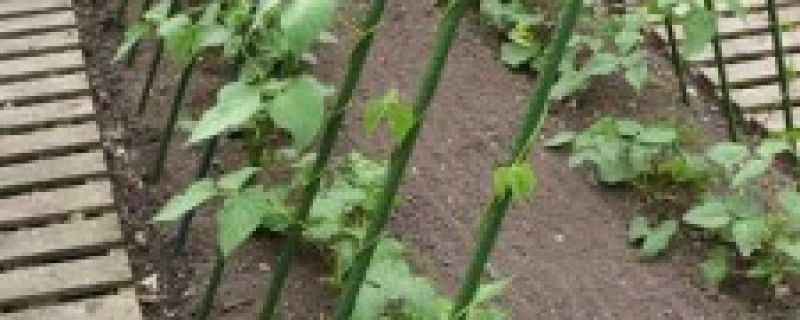
Every bean of the same variety will twist in the same direction. It is not necessary to tie them in. But if you are trying to help them get going, make sure you are twisting them in the direction they want to go. Look at neighbouring vines to see what they are doing.
Climbing varieties produce long vines that can reach over 2 meters. Bush varieties are more suitable for pots and containers as they only grow about 40cm tall.
Prepare the soil at least two weeks before planting if possible. Dig in some well-rotted farm yard manure or garden compost – about 2 bucketfuls per square meter. This will help retain the moisture and feed the beans, which are very greedy.
Once prepared cover the soil with plastic or polythene. The sun will shine on it and warm it up.
Put up supports before planting.
Supports must be strong and stable as the leafy bean plants are very heavy, particularly when wet. Try to find a spot sheltered from strong winds.
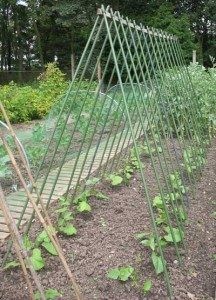
2 rows of 2.5m Bamboo canes (or hazel poles) – each cane 30cm apart – rows 45cm apart. Tops of canes in opposite row are tied together to form an A-shaped arch.
Wigwams take up less space.
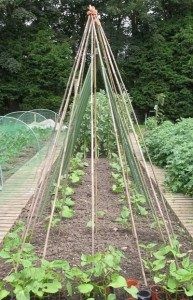
If a sunny wall is available, beans will climb up 2 lines of chicken wire attached to the wall.
Plant Out
Climbing beans are very tender so do not plant them out until all risk of frost has gone. This is usually around late May.
To give them a head start repot the seedlings from the tray into a 9cm pot, one bean per pot. The beans will grow on until it is safe to plant them outside.
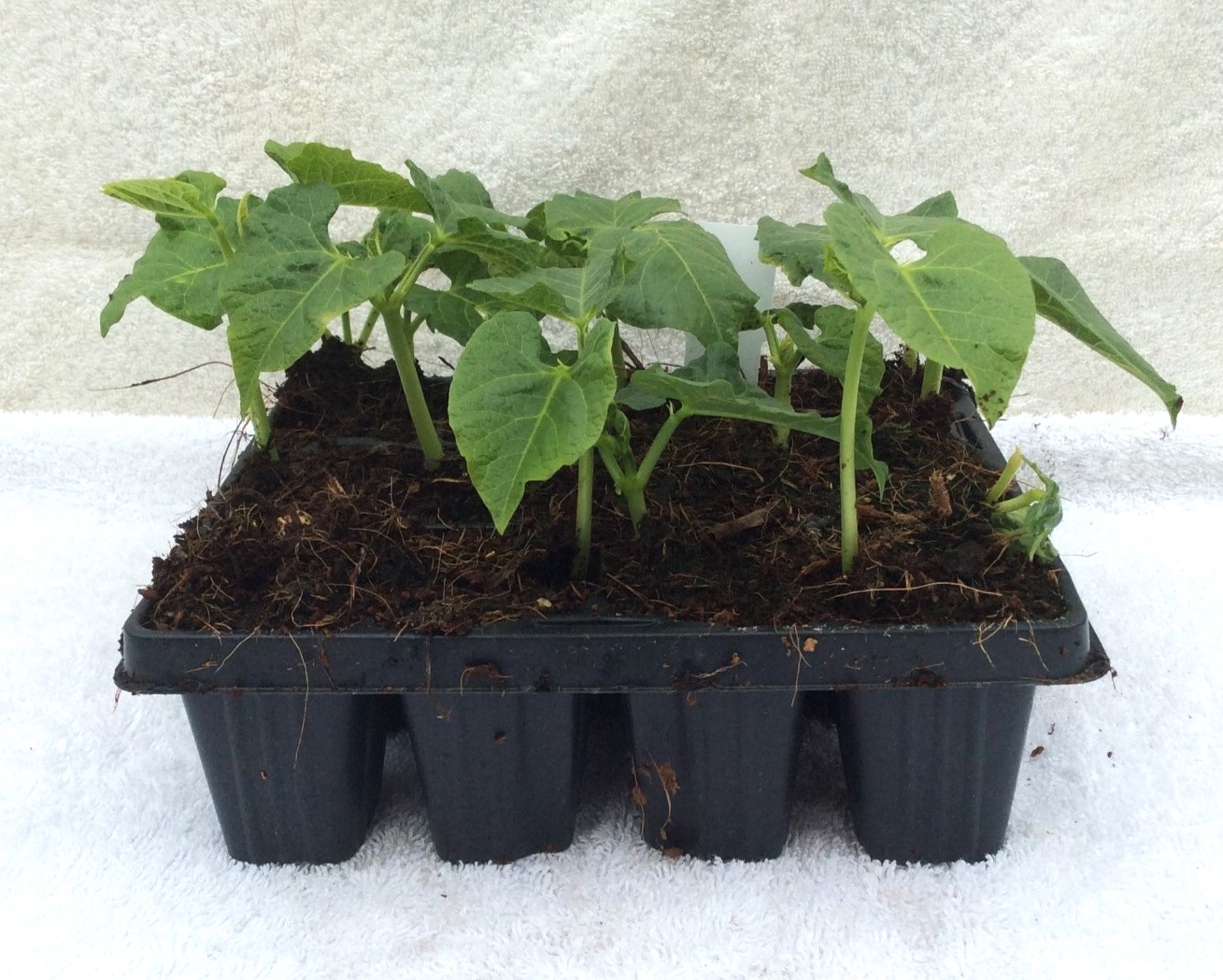
Harden the beans off by putting the pots outside during the day for at least 10 days before planting outside.
Water the plants well before planting out so that the root ball holds together and the beans get as little disturbance as possible.
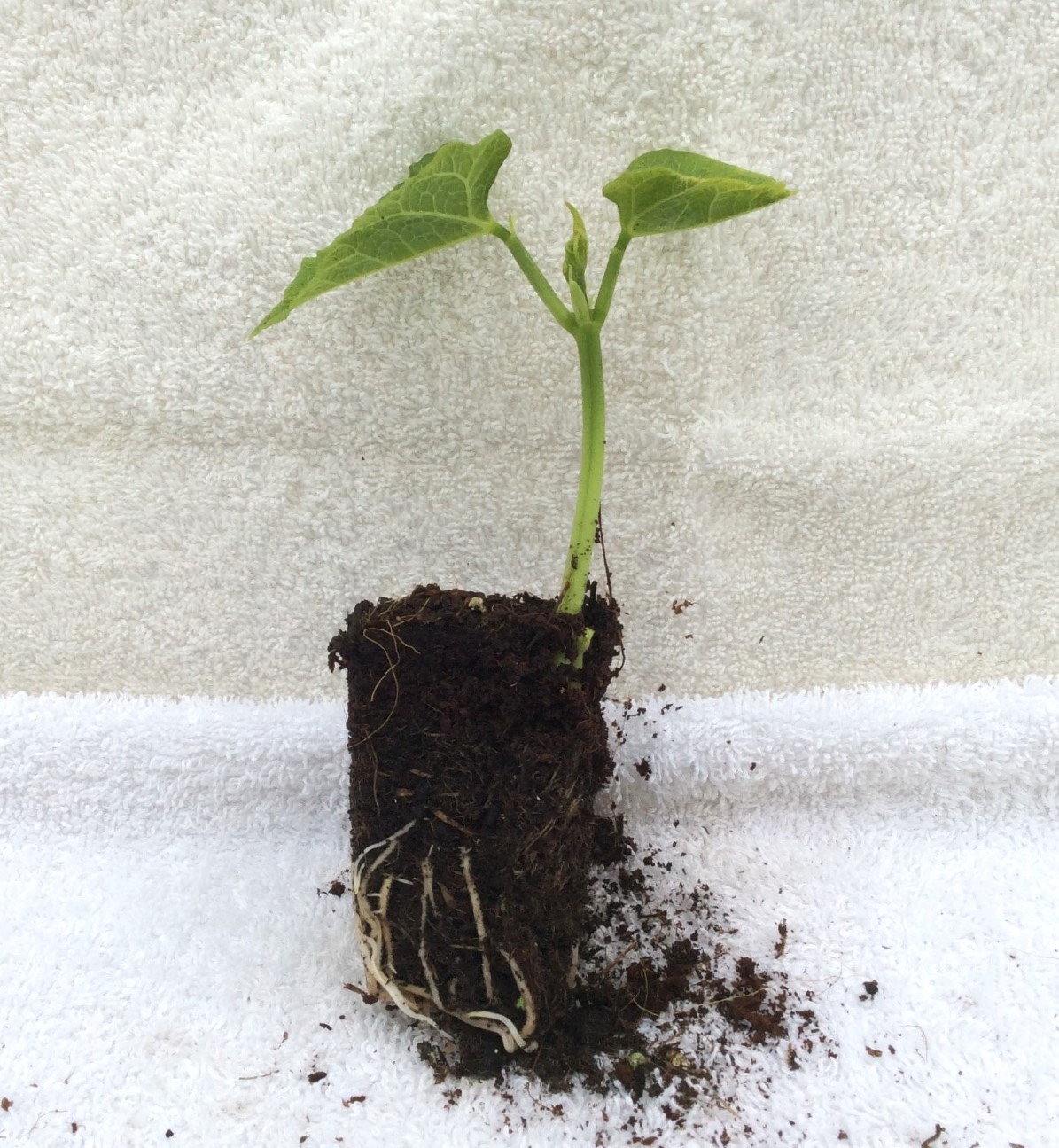
At the base of the support/cane make a hole in the soil about the size of the root ball. Without disturbing the roots, place the plant in the hole and push the soil around the root ball so that the plant is firmly held upright. Firm the soil down. Each cane should have one bean plant beside it.
Water the newly planted bean gently so that the soil is soaked. Keep the soil moist until the bean plant is growing well.
Water the beans in dry periods. Water the plants once a week when the bean pods start to develop.
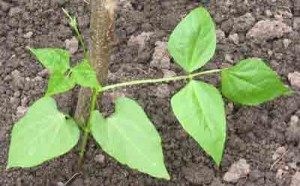
Weed the plot regularly to keep it free of weeds, particularly when the beans are short. If weeds are allowed to grow the beans will start to use them as supports.
Bean flowers develop into bean pods if the flowers have been pollinated by insects. You need a flower to get a pod.
The more insects there are buzzing about the bean plot the more likely the flowers are to be pollinated. Sometimes it is too cold for insects when the beans start flowering, but things will take off when the sun comes out.
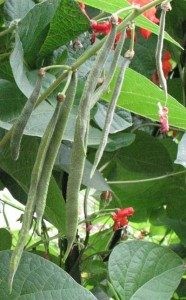
Harvest the bean pods when they are 10-20cm long and before the shape of the beans can be seen on the pod. The beans should snap in half without showing any fibrous bits, and the bean seeds inside should be tiny and pale. It is better to harvest the beans too early than let them get old and stringy. Pick the beans at least every other day. If beans are left on the vine to get big and old the plants will stop producing any more.
To harvest the beans break them off at the stem of the pod. It may be easier to cut them off with strong scissors.
Mon - Fri 8:00am - 5:00pm
Sat & Sun 9:00am - 5:00pm
Any questions? Email us or give us a call on 01904 400092.